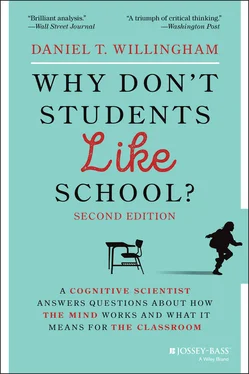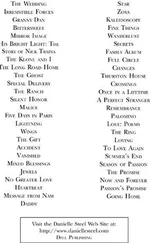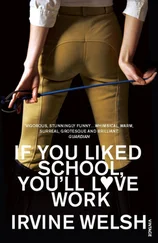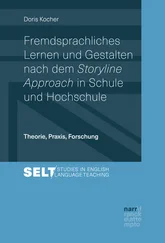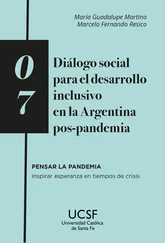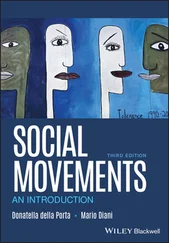6 Chapter 6FIGURE 6.1: Hugh Laurie as the expert diagnostician Gregory House.FIGURE 6.2: In this experiment, people get a brief look at a chess board and...FIGURE 6.3: Novices tended to put the top two figures in the same category b...FIGURE 6.4: New York City's Carnegie Hall is a renowned concert venue. An ol...FIGURE 6.5: Experimenters asked violinists how many hours per week (on avera...FIGURE 6.6: Thomas Alva Edison, famous for inventing or greatly improving th...FIGURE 6.7: Experts still practice. (a) Brilliant jazz pianist Hank Jones, s...FIGURE 6.8: Each line shows where the reader's eyes paused when reading a pa...
7 Chapter 7FIGURE 7.1: Marta Vieira da Silva and Abby Wambach are considered among the ...FIGURE 7.2: Two methods of determining field dependence or independence. At ...FIGURE 7.3: Learners with different styles might benefit from different ways...FIGURE 7.4: What does the word footbath mean? You know it means to soak one'...FIGURE 7.5: When my first daughter was born, one of the nurses told me, “Oh,...FIGURE 7.6: American biologist E. O. Wilson was a good enough scientist to e...
8 Chapter 8FIGURE 8.1: Two views of intelligence. According to the view on the left, a ...FIGURE 8.2: The dominant view of intelligence. There is a general intelligen...FIGURE 8.3: Two views of intelligence. On the left is Charles Darwin, common...FIGURE 8.4: Identical twins (and American Democratic politicians) Julián and...FIGURE 8.5: Who would you select for your team?FIGURE 8.6: This graph shows IQ score gains in all available data, worldwide...FIGURE 8.7: You could imagine going to a bar Trivia Night with Felix; he'd o...
9 Chapter 9FIGURE 9.1: In the backward digit span task, subjects hear a list of digits,...FIGURE 9.2: A typical experiment testing task switching.FIGURE 9.3: A typical Fotomat kiosk. At its peak, there were more than 4000 ...FIGURE 9.4: Document camera hack. They've come down in price, but this ingen...FIGURE 9.5: Why should you commit, say, the quadratic equation, to memory? I...FIGURE 9.6: Even teachers who discourage students from taking note on laptop...FIGURE 9.7: Connie Bernard, a member of the Baton Rouge, Louisiana, school b...FIGURE 9.8: Data showing how much the average American (of different ages) r...FIGURE 9.9: This photo of a woman texting in front of the Shwedagon pagoda i...FIGURE 9.10: Imagine you're at the grocery store and you spy chocolate chip ...FIGURE 9.11: The experimenter might ask, “Would you rather have $200 a month...
10 Chapter 10FIGURE 10.1: The return, and the swan song, of just about the simplest model...FIGURE 10.2: I have a great deal of driving experience, but I have practiced...FIGURE 10.3: Most of us treat Scrabble as a diversion, but tournament player...FIGURE 10.4: French students learning the results of their baccalaureat. Tea...FIGURE 10.5: Chess grandmaster Fabiano Caruana's preparations for a tourname...FIGURE 10.6: Avid golfers video themselves in an effort to learn more about ...FIGURE 10.7: Resolving to do something difficult is easy. Following through ...FIGURE 10.8: Writer David Sedaris 2on keeping a diary: “Most of it's just wh...
1 Cover
2 Table of Contents
3 Begin Reading
1 i
2 ii
3 v
4 vi
5 vii
6 xi
7 xiii
8 xv
9 xvii
10 xviii
11 1
12 2
13 3
14 4
15 5
16 6
17 7
18 8
19 9
20 10
21 11
22 12
23 13
24 14
25 15
26 16
27 17
28 18
29 19
30 20
31 21
32 22
33 23
34 24
35 25
36 26
37 27
38 28
39 29
40 30
41 31
42 32
43 33
44 34
45 35
46 36
47 37
48 38
49 39
50 40
51 41
52 42
53 43
54 44
55 45
56 46
57 47
58 48
59 49
60 50
61 51
62 52
63 53
64 54
65 55
66 56
67 57
68 58
69 59
70 60
71 61
72 62
73 63
74 64
75 65
76 66
77 67
78 68
79 69
80 70
81 71
82 72
83 73
84 74
85 75
86 76
87 77
88 78
89 79
90 80
91 81
92 82
93 83
94 84
95 85
96 86
97 87
98 88
99 89
100 90
101 91
102 92
103 93
104 95
105 96
106 97
107 98
108 99
109 100
110 101
111 102
112 103
113 104
114 105
115 106
116 107
117 108
118 109
119 110
120 111
121 112
122 113
123 114
124 115
125 116
126 117
127 119
128 120
129 121
130 122
131 123
132 124
133 125
134 126
135 127
136 128
137 129
138 130
139 131
140 132
141 133
142 134
143 135
144 136
145 137
146 138
147 139
148 140
149 141
150 143
151 144
152 145
153 146
154 147
155 148
156 149
157 150
158 151
159 152
160 153
161 154
162 155
163 156
164 157
165 158
166 159
167 160
168 161
169 162
170 163
171 164
172 165
173 167
174 168
175 169
176 170
177 171
178 172
179 173
180 174
181 175
182 176
183 177
184 178
185 179
186 180
187 181
188 182
189 183
190 184
191 185
192 186
193 187
194 188
195 189
196 190
197 191
198 192
199 193
200 194
201 195
202 196
203 197
204 198
205 199
206 200
207 201
208 202
209 203
210 204
211 205
212 206
213 207
214 208
215 209
216 210
217 211
218 212
219 213
220 214
221 215
222 216
223 217
224 218
225 219
226 220
227 221
228 222
229 223
230 224
231 225
232 226
233 227
234 228
235 229
236 230
237 231
238 232
239 233
240 234
241 235
242 236
243 237
244 238
245 239
246 240
247 241
248 242
249 243
250 244
251 245
252 246
253 247
254 248
255 249
256 250
257 251
258 252
259 253
260 254
261 255
262 256
263 257
264 258
265 259
266 260
267 261
268 262
269 263
270 264
271 265
272 266
273 267
274 268
275 269
276 270
277 271
278 273
279 274
280 275
281 276
282 277
283 278
284 279
285 281
286 282
287 283
288 284
289 291
290 292
291 293
292 294
293 295
294 296
295 297
296 298
Praise for Why Don't Students Like School
“Brilliant analysis.”
–Wall Street Journal
“A triumph of critical thinking.”
— Washington Post
“Accessible, entertaining prose that knits together the cognitive science of learning with illuminating examples, to reveal students' challenges navigating school. A real gem is Willingham's convergence on clear implications for classroom improvement. The book is a masterpiece of style and content that every teacher will find indispensable.”
—Mark McDaniel, professor, Washington University in St. Louis, co-author of Make It Stick
“In these pages, Daniel Willingham lays out key ideas that have the power to improve education, borne from the study of cognitive science and evidence of how students learn, using accessible and thought-provoking examples that educators—and, indeed, everyone with an interest in schools—can find compelling. Since its initial publication, and through today, Why Don't Students Like School? represents a critical addition to the literature on teaching and learning. Daniel Willingham expertly examines cognition in multiple ways and then puts that knowledge to work with recommendations for practical actions that teachers can take in their classrooms to strengthen their instructional pedagogy. Amid a massive national shift to the increased use of distance learning, this second edition also focuses on what research currently tells us about the use of technology in education, and helps to provide educators with the essential questions they should ask about adopting new technologies and teaching tools. To be sure, this second edition of Daniel Willingham's pathbreaking work is right on time.”
Читать дальше
